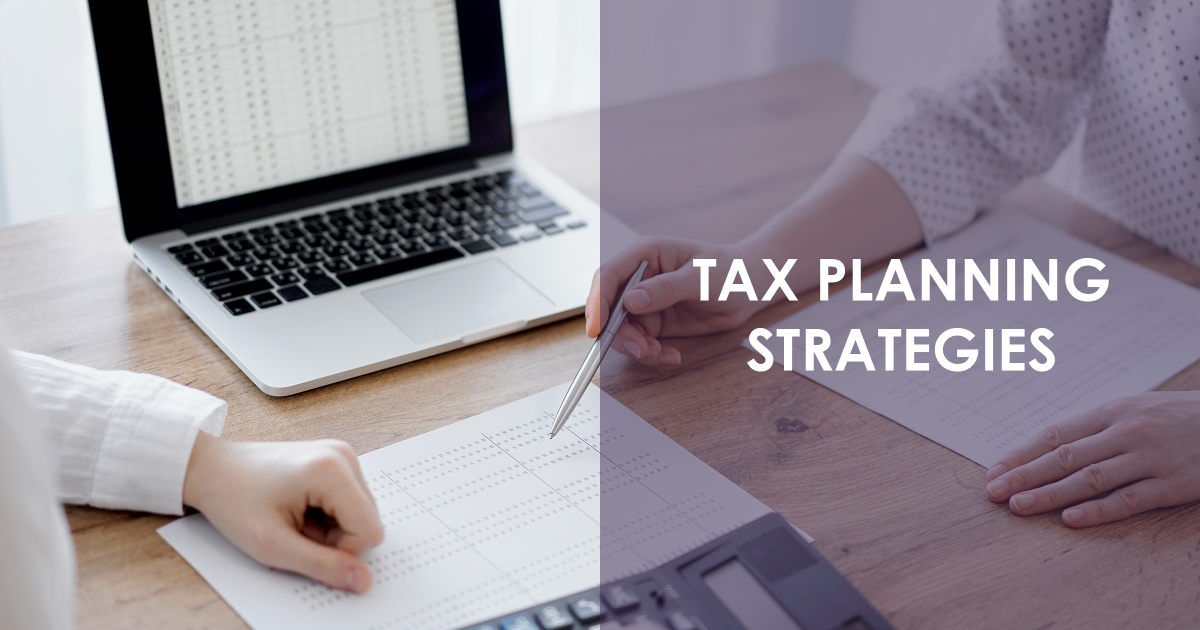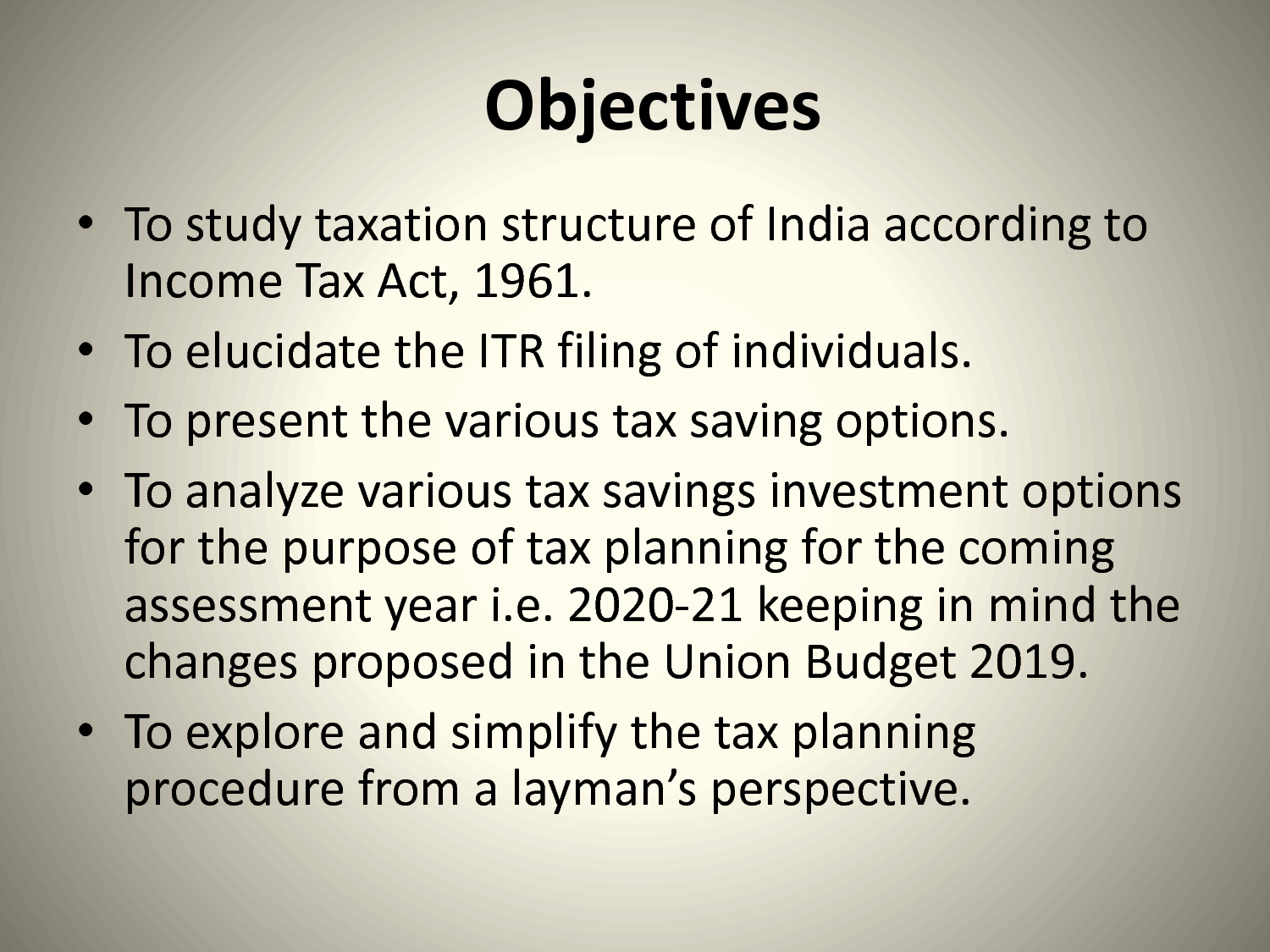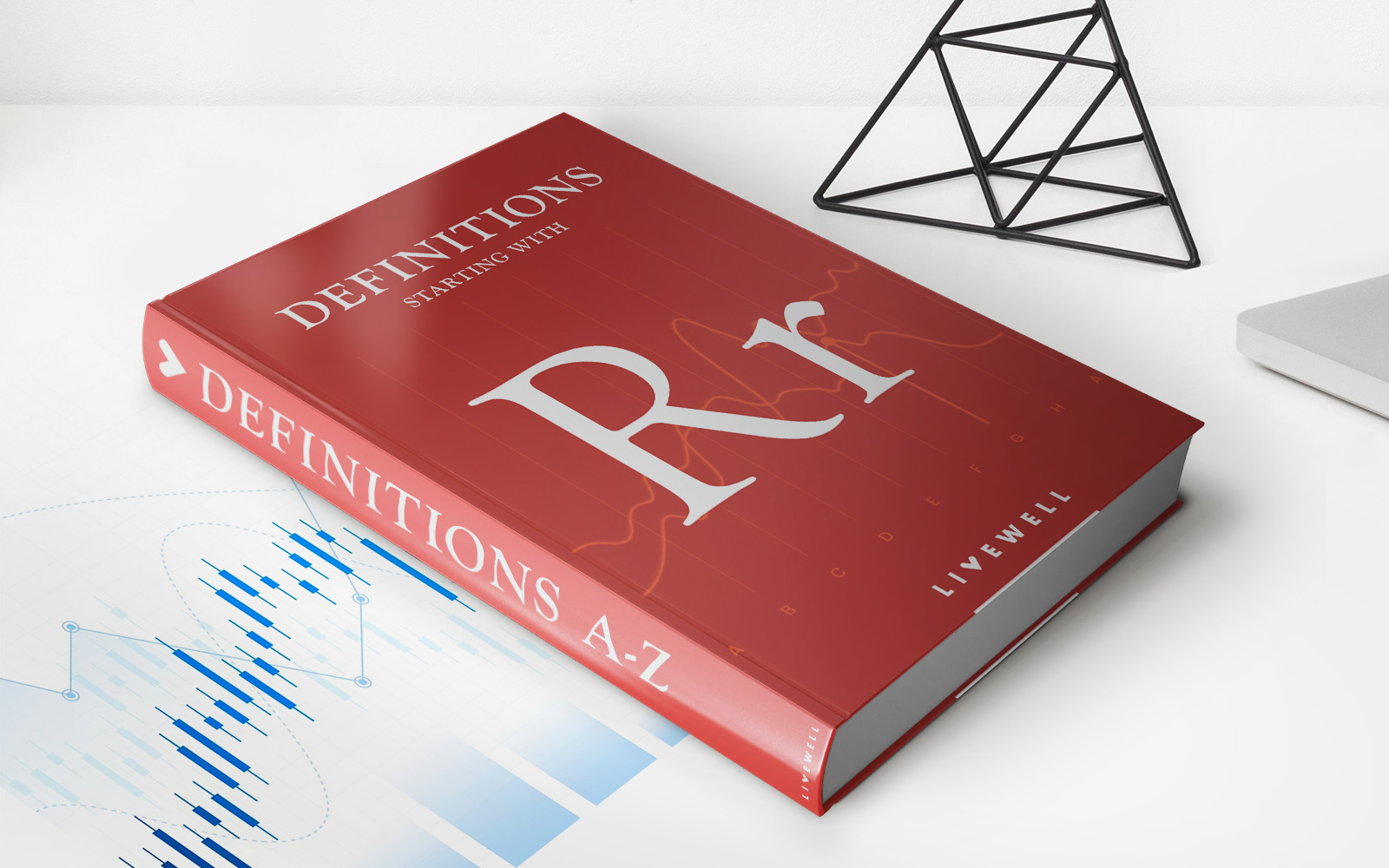

Finance
What Are Tax Planning Strategies
Published: January 20, 2024
Looking for effective tax planning strategies? Explore various finance-focused techniques to optimize your tax liabilities and maximize your financial goals.
(Many of the links in this article redirect to a specific reviewed product. Your purchase of these products through affiliate links helps to generate commission for LiveWell, at no extra cost. Learn more)
Table of Contents
- Introduction
- Identifying Your Tax Objectives
- Understanding the Current Tax Laws
- Maximizing Deductions and Credits
- Prioritizing Tax-Advantaged Investments
- Deferring Income and Accelerating Expenses
- Choosing the Right Business Structure
- Utilizing Retirement Accounts
- Estate Planning for Tax Efficiency
- Practicing Year-Round Tax Planning
- Conclusion
Introduction
Welcome to the world of tax planning strategies! Taxes play a significant role in our financial lives, and understanding how to optimize them can have a substantial impact on our bottom line. Tax planning involves analyzing your financial situation, identifying opportunities, and implementing strategies to minimize your tax liability while remaining compliant with the tax laws.
In this article, we will explore various tax planning strategies that individuals and businesses can utilize to their advantage. From maximizing deductions and credits to choosing the right business structure, we will cover a range of techniques to help you navigate the complex world of taxes.
It’s important to note that tax laws can change frequently, so it’s essential to stay informed and adapt your tax planning strategies accordingly. Working with a knowledgeable tax professional can provide valuable guidance and ensure you are taking advantage of all available opportunities.
Whether you’re an individual taxpayer looking to reduce your tax burden or a business owner seeking to optimize your tax situation, this article will provide valuable insights and practical tips to help you make informed decisions and achieve your tax objectives.
So, without further ado, let’s dive into the world of tax planning strategies and discover how you can take control of your financial future by minimizing your tax liability!
Identifying Your Tax Objectives
Before diving into tax planning strategies, it’s crucial to identify your tax objectives. What are your financial goals, and how can you leverage the tax system to achieve them? Are you looking to minimize your current tax liability, maximize your tax refunds, or plan for future tax obligations?
Start by evaluating your current financial situation and determining your long-term financial goals. Are you saving for retirement, planning to purchase a home, or starting a business? Understanding your objectives will give you a clear direction when it comes to implementing tax planning strategies.
Consider your short-term and long-term financial needs. Do you have any anticipated major life events, such as marriage, having children, or sending them to college? These events can have tax implications, and planning for them in advance can help you mitigate your tax liability.
Additionally, assess your risk tolerance and your willingness to engage in more complex tax planning strategies. Some strategies may require a higher level of involvement and understanding, while others may be more straightforward and easier to implement.
Once you have a clear understanding of your tax objectives, you can start exploring the various tax planning strategies available to help you achieve them. From there, you can create a personalized tax plan that aligns with your goals and maximizes your tax savings.
Understanding the Current Tax Laws
When it comes to tax planning, staying informed about the current tax laws is essential. Tax laws are continually evolving, and being aware of changes can help you make informed decisions and optimize your tax situation.
Start by familiarizing yourself with the income tax brackets and rates for the current tax year. Understanding how your income is taxed at different levels can help you plan your finances accordingly.
Additionally, be aware of any recent changes to tax deductions, credits, and exemptions. These can significantly impact your tax liability and may present new opportunities for savings.
It’s also essential to keep track of tax law changes that specifically relate to your situation. For example, if you own a business, familiarize yourself with any relevant tax laws that may affect your industry, such as deductions and credits available to certain types of businesses.
Utilize authoritative sources such as the Internal Revenue Service (IRS) website, tax publications, or consult with a tax professional to ensure you have accurate and up-to-date information on tax laws.
By staying informed about the current tax laws, you can make educated decisions about your tax planning strategies and take advantage of any available tax breaks or incentives.
Maximizing Deductions and Credits
One of the fundamental tax planning strategies is maximizing deductions and credits to reduce your taxable income and ultimately lower your tax liability. Deductions and credits can significantly impact the amount you owe in taxes, so it’s essential to take advantage of all available opportunities.
Start by understanding the difference between deductions and credits. Deductions reduce your taxable income, while credits directly reduce your tax liability. Both can be valuable tools in minimizing your overall tax burden.
Common deductions include expenses related to homeownership, such as mortgage interest and property taxes, as well as medical expenses, education expenses, and charitable contributions. Stay organized throughout the year by keeping track of your receipts and documentation for these expenses.
Explore available tax credits, such as the Earned Income Tax Credit (EITC), Child Tax Credit, and education credits. These credits can provide significant tax savings, so make sure you qualify and understand the eligibility criteria.
Consider whether it makes sense to itemize deductions or take the standard deduction. The standard deduction is a set amount based on your filing status and often simplifies the tax filing process. However, if your itemized deductions exceed the standard deduction, it may be more beneficial to itemize.
Another strategy for maximizing deductions is to cluster your expenses. If you have the flexibility to choose the timing of certain payments, such as medical expenses or charitable contributions, consider bundling them in a single tax year to surpass the threshold for deductibility.
Lastly, explore tax-advantaged accounts such as a Health Savings Account (HSA), Flexible Spending Account (FSA), or a 401(k) retirement plan. Contributions to these accounts are often pre-tax, reducing your taxable income and providing long-term tax benefits.
Keep in mind that tax laws change, and some deductions and credits may be subject to phase-outs or income limitations. Therefore, it’s crucial to stay informed about any updates and consult with a tax professional to ensure you are maximizing your deductions and credits within the current tax laws.
Prioritizing Tax-Advantaged Investments
When it comes to tax planning, it’s important to consider the impact of your investments on your tax liability. Prioritizing tax-advantaged investments can help you minimize your taxable income and potentially lower your tax rate.
One popular tax-advantaged investment option is contributing to retirement accounts such as Individual Retirement Accounts (IRAs) or employer-sponsored 401(k) plans. These accounts offer various tax benefits, such as tax-deductible contributions or tax-free growth. Take advantage of these accounts by contributing the maximum allowable amount each year.
If your employer offers a 401(k) matching program, ensure you contribute enough to receive the full employer match. This is essentially free money and boosts your retirement savings while reducing your taxable income.
Consider the benefits of investing in tax-free municipal bonds. Interest income earned from municipal bonds is often exempt from federal income tax and sometimes exempt from state and local taxes, depending on where you live. Municipal bonds can be an attractive option for individuals in higher tax brackets.
Explore investment opportunities in tax-efficient funds. These funds are designed to minimize taxable distributions, which can help reduce your tax liability. Look for funds with a low turnover rate and a focus on long-term capital appreciation rather than generating regular taxable income, such as qualified dividends or short-term capital gains.
Another tax-advantaged investment to consider is a Health Savings Account (HSA). HSAs offer a triple tax advantage – contributions are tax-deductible, earnings grow tax-free, and withdrawals for qualified medical expenses are tax-free. Maximize your HSA contributions if you are eligible to do so.
Before making any investment decisions, it’s essential to carefully evaluate the risks, returns, and tax implications. Consult with a financial advisor or tax professional to ensure that your investment strategy aligns with your overall financial goals and tax planning objectives.
Prioritizing tax-advantaged investments can provide you with long-term tax benefits and help grow your wealth while minimizing your tax liability. By incorporating tax considerations into your investment strategy, you can optimize your overall financial situation.
Deferring Income and Accelerating Expenses
Deferring income and accelerating expenses are effective tax planning strategies that can help manage your taxable income in a given year. By strategically timing when you receive income and pay expenses, you can potentially lower your current tax liability.
If you expect to be in a lower tax bracket in the following year, consider deferring income until then. This can be done by delaying the receipt of bonuses, commissions, or certain investments with taxable gains. By shifting income to a lower tax year, you can reduce the amount subject to higher tax rates.
On the other hand, accelerating tax-deductible expenses can provide immediate tax benefits. Paying deductible expenses in the current year, rather than delaying them to the following year, can increase your deductions and reduce your taxable income.
Review your expenses and identify deductions that you can potentially accelerate. This may include prepaying certain bills, making charitable contributions, or paying for medical expenses before year-end. Be mindful of any limitations or restrictions on deductibility imposed by tax laws.
Keep in mind that the ability to defer income or accelerate expenses may depend on your individual circumstances and the type of income or expenses involved. It’s important to consult with a tax professional to ensure that these strategies align with your overall tax plan and goals.
Additionally, be aware of the alternative minimum tax (AMT) when considering deferring income. The AMT imposes a separate tax calculation, and certain deductions may be subject to different rules under the AMT.
Deferring income and accelerating expenses require careful consideration and planning. By strategically managing your income and expenses, you can optimize your tax situation and potentially reduce your overall tax liability.
Choosing the Right Business Structure
When starting a business or considering a change in your current business structure, it’s essential to carefully evaluate the tax implications of each business entity type. Choosing the right business structure can have significant tax advantages and impact your overall tax planning strategy.
The most common business structures include sole proprietorship, partnership, limited liability company (LLC), S corporation, and C corporation. Each structure has its own tax treatment, advantages, and considerations.
A sole proprietorship is the simplest form of business ownership. The business is not separate from the owner for tax purposes, and the owner reports business income and expenses on their personal tax return. While this structure offers simplicity, it may not provide the same level of liability protection or tax planning opportunities as other structures.
A partnership is similar to a sole proprietorship but involves multiple owners. Income and expenses are typically passed through to the partners, who report their share on their individual tax returns. Partnerships offer flexibility and sharing of responsibilities but may have limitations on certain deductions and credits.
An LLC provides the benefit of limited liability for owners while offering flexibility in tax treatment. By default, an LLC is treated as a pass-through entity for tax purposes, meaning that income and expenses flow through to the owners’ personal tax returns. However, an LLC can also elect to be taxed as an S corporation or even a C corporation, depending on the specific goals and circumstances of the business.
S corporations are popular among small businesses due to their pass-through status. This structure allows for the business income and losses to flow through to the shareholders’ personal tax returns, potentially reducing self-employment taxes. However, S corporations have certain eligibility requirements and restrictions.
C corporations are separate legal entities from their owners and have their own tax obligations. They are subject to corporate income tax rates, and profits can be distributed to shareholders in the form of dividends. C corporations may be advantageous for businesses with significant growth and investment opportunities.
When choosing a business structure, evaluate factors such as liability protection, ease of administration, flexibility, and tax considerations. Consult with a tax advisor or attorney to assess your specific situation and determine the optimal structure that aligns with your financial and tax goals.
Changing your business structure in the future may be possible but could have tax implications. Therefore, proper planning is essential to minimize any potential tax consequences when making structural changes to your business.
Utilizing Retirement Accounts
Retirement accounts are not only a great way to save for the future but can also provide significant tax benefits. Utilizing retirement accounts as part of your tax planning strategy can help reduce your taxable income and provide long-term financial security.
One of the most common retirement accounts is the Individual Retirement Account (IRA). Traditional IRAs offer tax-deferred contributions, meaning you can deduct your contributions from your taxable income in the year they are made. However, withdrawals in retirement are taxed as ordinary income.
If you meet certain income requirements, you may also be eligible to contribute to a Roth IRA. Roth IRA contributions are made with after-tax dollars, meaning they are not tax-deductible. However, qualified withdrawals in retirement are tax-free, including any investment earnings.
Contributions to employer-sponsored retirement plans, such as a 401(k) or 403(b), are also tax-advantaged. These plans allow for pre-tax contributions, reducing your taxable income for the year. Additionally, many employers offer matching contributions, which is essentially free money towards your retirement savings.
Consider contributing the maximum amount allowed to your retirement accounts each year. By doing so, not only are you saving for your future, but you are also lowering your current taxable income. The contribution limits vary depending on the type of retirement account and your age.
If you are self-employed or own a small business, explore retirement plans designed for business owners, such as a Simplified Employee Pension (SEP) IRA or a Solo 401(k). These options allow for higher contribution limits and may provide additional tax benefits for your business.
Keep in mind that there are rules and restrictions associated with retirement accounts. Early withdrawals before the age of 59 ½ may incur a penalty, and there are required minimum distributions (RMDs) once you reach a certain age. It’s important to familiarize yourself with the specific rules and consult with a financial advisor or tax professional for guidance.
By utilizing retirement accounts, you not only secure your financial future but also take advantage of valuable tax benefits. Incorporate retirement savings into your tax planning strategy to maximize your tax savings and long-term financial growth.
Estate Planning for Tax Efficiency
Estate planning involves making arrangements for the management and distribution of your assets after your passing. While estate planning serves various purposes, it can also play a crucial role in achieving tax efficiency for your heirs.
One essential aspect of estate planning is understanding the potential tax implications involved. Estate taxes, also known as inheritance taxes or death taxes, may apply to the transfer of assets to your beneficiaries upon your passing. These taxes can significantly reduce the value of the estate and impact the financial well-being of your loved ones.
One strategy to consider is maximizing the use of exemptions and tax-advantaged gifting. By taking advantage of the annual gift tax exclusion, you can transfer assets to your loved ones tax-free up to a certain amount each year. This can help reduce the size of your taxable estate and provide your heirs with a valuable gift.
Consider establishing a trust as part of your estate plan. Trusts can provide tax benefits by allowing you to transfer assets outside of your taxable estate while still retaining control over how they are managed and distributed. Consult with an estate planning attorney to determine the best type of trust for your specific situation.
If you have significant assets, explore options such as creating a family limited partnership or family limited liability company (LLC). These structures can help facilitate the transfer of assets to future generations while potentially reducing estate taxes through valuation discounts.
Life insurance can also be a valuable tool in estate planning for tax efficiency. Proceeds from life insurance policies are generally income tax-free and can help provide liquidity to cover estate taxes or other financial obligations upon your passing.
Regularly reviewing and updating your estate plan is essential to ensure it remains aligned with your goals and any changes in tax laws. Estate planning is a complex process, and consulting with an experienced estate planning attorney or tax professional is highly recommended.
Remember that estate planning serves a broader purpose beyond tax efficiency. It allows you to protect and provide for your loved ones, ensure your assets are distributed according to your wishes, and minimize potential conflicts or disputes.
By incorporating tax considerations into your estate planning strategy, you can help minimize the tax burden on your beneficiaries and leave a lasting legacy for future generations.
Practicing Year-Round Tax Planning
Tax planning is not a one-time event but a continuous process that should be practiced throughout the year. By incorporating year-round tax planning into your financial routine, you can maximize your tax savings, stay organized, and avoid any last-minute surprises when tax season arrives.
One key aspect of year-round tax planning is maintaining accurate records and documentation. Keep track of all receipts, invoices, and other supporting documents related to your income and expenses. This will help ensure that you can substantiate any deductions or credits claimed on your tax return.
Regularly review your income and expenses to identify any potential tax-saving opportunities. Consider consulting with a tax professional to analyze your financial situation and provide guidance on optimizing your tax strategy.
Stay informed about any tax law changes throughout the year. Subscribe to newsletters or updates from the IRS or consult authoritative sources to ensure you are aware of any new deductions, credits, or reporting requirements that may affect you.
Consider adjusting your tax withholding or estimated tax payments to avoid any underpayment penalties or potential surprises at tax time. Review your current tax situation and consult with a tax professional to determine the appropriate amount to withhold or pay in quarterly estimated taxes.
Explore potential tax-advantaged investment opportunities. Throughout the year, keep an eye out for any investments, such as certain types of mutual funds or real estate ventures, that offer tax benefits or incentives. Evaluating these options in advance allows you to make informed investment decisions while considering the tax implications.
Take advantage of any available tax planning tools and resources. Utilize tax software or online calculators to project your tax liability and experiment with different scenarios to assess the impact of various deductions, credits, and investment decisions.
Finally, remember that tax planning is not just about reducing your current tax liability. It’s also about building a solid financial foundation for the future. Assess your overall financial goals and align your tax planning strategies with these objectives.
By practicing year-round tax planning, you can be proactive in maximizing your tax savings, staying compliant with tax laws, and ensuring your financial affairs are in order. Make tax planning a regular part of your financial routine to reap the benefits come tax season.
Conclusion
Tax planning is a vital component of your overall financial strategy. By implementing effective tax planning strategies, you can minimize your tax liability, maximize your savings, and achieve your financial goals more efficiently.
Throughout this article, we have explored several key tax planning strategies. From maximizing deductions and credits to choosing the right business structure, utilizing retirement accounts, and practicing year-round tax planning, each strategy plays a crucial role in optimizing your tax situation.
Identifying your tax objectives and staying informed about the current tax laws are the first steps in developing a successful tax plan. From there, you can focus on maximizing deductions and credits, prioritizing tax-advantaged investments, and deferring income while accelerating expenses. These strategies can help reduce your taxable income and lower your overall tax liability.
For business owners, choosing the right business structure is essential for tax efficiency. Examining the benefits of different entities and understanding the tax implications can help you make informed decisions that align with your financial goals.
Moreover, utilizing retirement accounts and engaging in estate planning for tax efficiency are essential for long-term financial security. By taking advantage of tax-advantaged retirement accounts and implementing sound estate planning strategies, you can minimize tax obligations and provide for your heirs effectively.
Lastly, remember that tax planning is a year-round endeavor. By practicing year-round tax planning, staying organized, and staying informed about tax law changes, you can make strategic financial decisions that optimize your tax savings and reduce any potential surprises at tax time.
As always, it is crucial to consult with a tax professional or financial advisor to ensure that you are applying the most appropriate tax planning strategies given your unique financial situation and goals.
By integrating these tax planning strategies into your financial plan, you can take control of your tax liability, maximize your savings, and ultimately achieve a healthier financial future.














